Buying a used car can feel like an act of bravery—or blind optimism—depending on how you look at it. For most people, it’s a practical decision driven by budget constraints, depreciation concerns, or the desire to get more value for their money. And in many ways, it’s a smart move.
After all, cars lose thousands of dollars in value the moment they’re driven off the lot brand new. But despite the financial logic, the used car market carries a reputation for being risky, unpredictable, and sometimes outright treacherous.
This is especially true for buyers who aren’t automotive experts, who may not know how to separate a dependable deal from a four-wheeled disaster waiting to happen.
The truth is, not all used cars are created equal. While some models are built to last and can offer years of trouble-free ownership even after changing hands multiple times, others seem destined to empty wallets and rack up repair bills no matter how gently they’re treated.
Understanding the difference between the two can mean the difference between a car that quietly and reliably gets you from point A to point B and one that leaves you stranded on the side of the road while the check engine light blinks with malicious glee.
That’s where this guide comes in. We’ve curated two distinct lists: five cars that you can buy used with virtually zero fear, and five cars that should come with a very clear warning label. The first group is made up of vehicles known for their mechanical reliability, long lifespans, low maintenance costs, and wide availability of affordable parts.
These cars have stood the test of time and earned their reputations through countless miles on roads all over the world. They are the kind of vehicles you can buy used, drive for years, and sell again, often with minimal issues.
On the flip side, the second group represents used cars that might look like a good deal on the surface but have earned a reputation for hidden problems, expensive repairs, and poor long-term durability.
These are vehicles that may have been flashy or luxurious when new, or quirky and fun to drive, but that now, as used cars, demand caution, research, and usually a mechanic’s blessing before signing on the dotted line.
For many of these, problems tend to arise not because the owner did something wrong, but because of inherent design flaws, poor engineering choices, or an over-reliance on complex systems prone to failure.
It’s important to note that any used car, regardless of brand or model, can become a lemon if it’s been poorly maintained, abused, or neglected. But some cars start with a better foundation than others, and that’s the difference this article aims to explore.
We’re not just talking about anecdotal impressions here; these conclusions are drawn from widespread owner experiences, mechanic feedback, long-term reliability studies, and known service histories.
If you’re in the market for a used car and want to make a choice you won’t regret, this guide is here to help. Whether you’re looking for a reliable daily commuter, a durable pickup, or an all-weather SUV, the five “safe bets” we’ve included will give you peace of mind and long-term value.
And if you’ve got your eye on something a bit more unique or luxurious, our list of five cars to approach with caution might just save you thousands in future repairs—and a whole lot of frustration.
Let’s dive in and look at the best and worst bets in today’s used car market. While buying used should be smart, it shouldn’t feel like a gamble.
Also Read: 5 Cars That Maintain Value Despite High Mileage And 5 That Drop Like Rocks
5 Cars You Can Buy Used With Zero Fear
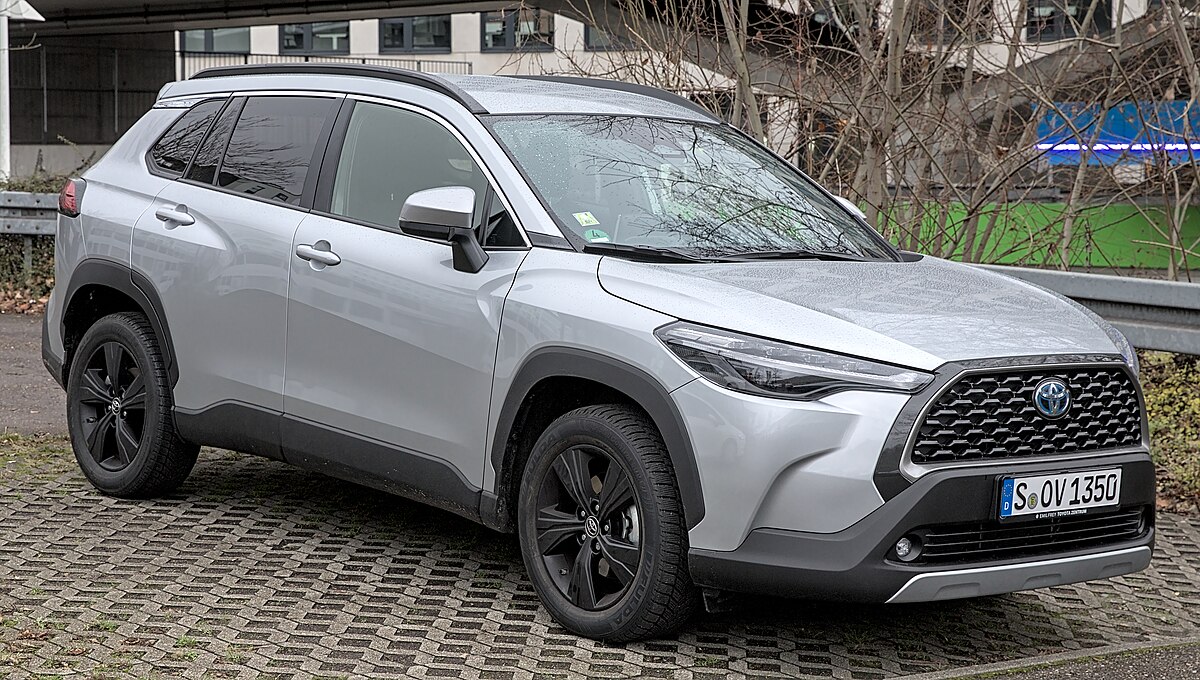
1. Toyota Corolla
The Toyota Corolla stands out as a benchmark in automotive reliability and practicality, making it one of the safest used cars you can purchase with zero fear. The Corolla’s engine architecture, particularly the inline-4 powerplants found in models from the 2000s onward, is designed for endurance and efficiency rather than flashy performance.
This design philosophy results in a car that is both simple and robust.Owners consistently report that these engines can exceed 200,000 miles, sometimes reaching even beyond 300,000 miles with routine oil changes and proper maintenance schedules.
The Corolla’s reputation isn’t just hearsay—it is backed by decades of data and customer testimonials indicating very few unexpected mechanical failures, especially in terms of major components like the engine and transmission.
Moreover, the Corolla’s build quality extends beyond just the engine. The suspension components, braking system, and electrical systems are engineered to be durable and low maintenance, even in harsh weather conditions or under heavy daily use. Unlike some other cars that might have complicated or sensitive electronic systems, the Corolla’s relatively straightforward design helps keep repair costs low.
Replacement parts are not only inexpensive but also widely available worldwide, which reduces wait times and repair bills substantially. This accessibility to parts is a big plus for used car buyers who want to avoid extended periods without transportation while waiting for repairs.
Additionally, the Toyota Corolla is known for its excellent fuel economy, which makes it an economical choice for both city commuting and highway driving. Most models average between 30-35 miles per gallon, which helps offset ownership costs over the long term.
When it comes to safety, the Corolla also performs well, with newer used models featuring standard airbags, stability control, and other modern safety features. The resale value of the Corolla remains consistently high because of its stellar reputation, meaning buyers can often sell or trade the car without taking a steep loss. For anyone wanting a stress-free used car experience, the Corolla is the epitome of reliability and value.

2. Honda Civic
Another titan in the used car market, the Honda Civic has a reputation for durability that rivals the Toyota Corolla. Honda’s engineering philosophy emphasizes a balance between reliability, fuel efficiency, and driver engagement. This balance is reflected in the Civic’s engines, which are known for their longevity and smooth operation.
Civics from the 2000s onward commonly feature either the 1.8-liter or 2.0-liter inline-4 engines, both of which are simple, efficient, and capable of running smoothly beyond 200,000 miles with regular oil changes and maintenance. The Civic’s transmissions, especially the manual variants, are also praised for their robustness, though automatic transmissions have improved significantly in reliability in recent models.
Beyond the engine, the Civic boasts a refined chassis that offers a comfortable yet sporty driving experience. This makes it a popular choice not only among commuters but also among driving enthusiasts who want a car that is fun without sacrificing reliability.
The Civic’s suspension system is well-tuned to handle daily bumps and rough roads without frequent repairs, contributing to lower maintenance costs over time. Additionally, the Civic’s interior is known for quality materials and ergonomic design, which means that older models often feel less worn and continue to provide a pleasant driving environment.
Honda’s commitment to safety and technology is another major factor that makes the Civic an attractive used car option. Features such as anti-lock brakes, stability control, and multiple airbags have been standard in many recent models, and newer used Civics often come equipped with Honda’s suite of driver assistance features.
Parts availability and dealer support are excellent, and because the Civic has been such a popular model worldwide, there is a wealth of knowledge and aftermarket support for maintenance and repairs. All these factors combined make the Honda Civic a used car you can buy with complete peace of mind, knowing it will serve reliably for years with routine upkeep.
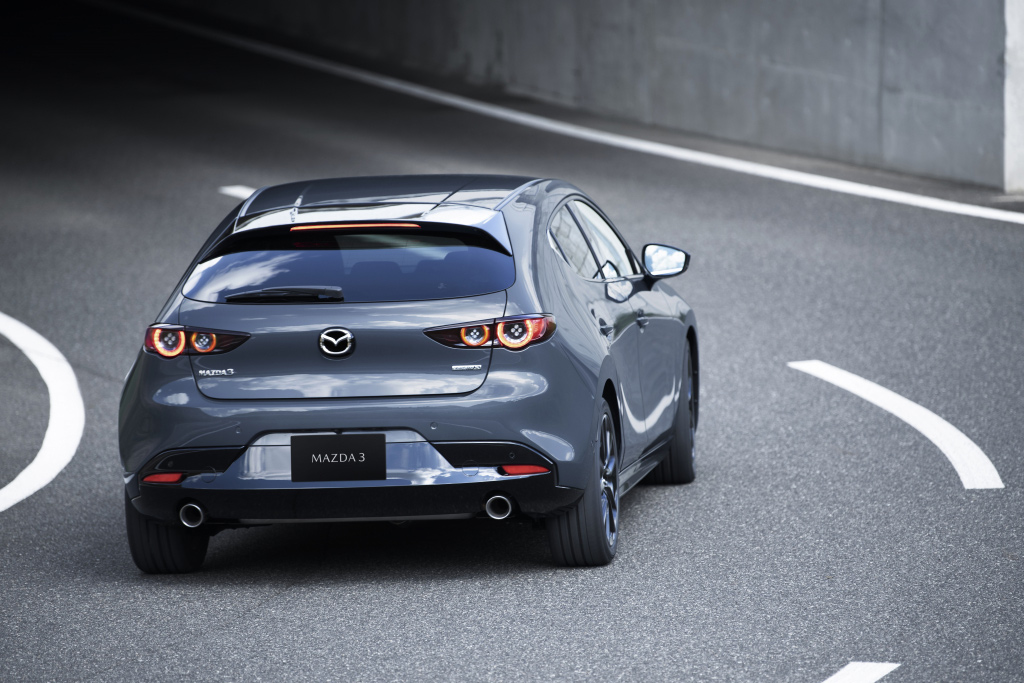
3. Mazda3
Mazda3 has steadily built a strong reputation for blending reliability with spirited driving dynamics, positioning it as one of the top compact cars in the used market for buyers seeking a balance between dependability and enjoyment. Unlike some other compact sedans that focus purely on economy, the Mazda3 places an emphasis on driving pleasure through sharp steering and responsive handling.
This dynamic edge does not come at the expense of reliability, as Mazda has maintained a consistent focus on engineering durable engines and drivetrains.
The Mazda3’s SkyActiv technology, introduced in the early 2010s, represents Mazda’s innovative approach to improving fuel efficiency and engine longevity. These engines are designed with higher compression ratios, improved combustion efficiency, and lightweight components that reduce stress on the powertrain.
The result is an engine that provides more power and better fuel economy than previous generations, while also maintaining long-term durability. Many owners report their Mazda3s performing reliably well past 150,000 miles, with proper oil changes and periodic servicing.
Additionally, the Mazda3’s transmissions, both manual and automatic, are known for their smooth operation and minimal issues, although routine maintenance remains essential to avoid premature wear.
The interior quality and safety features of the Mazda3 also contribute to its appeal as a worry-free used car. Mazda often incorporates higher-grade materials and thoughtful cabin design, giving the Mazda3 a more premium feel compared to some competitors. Safety ratings are typically strong, thanks to standard equipment like multiple airbags, electronic stability control, and advanced driver aids in more recent models.
Maintenance costs are reasonable, with parts readily available and the car’s relatively straightforward engineering minimizing the likelihood of expensive repairs. For drivers who want a used car that combines reliability with a spirited driving experience and modern amenities, the Mazda3 is an excellent choice that stands out in the crowded compact car market.

4. Subaru Outback
The Subaru Outback has earned a loyal following thanks to its unique combination of utility, all-weather capability, and reliability. For used car buyers living in regions prone to rain, snow, or rough terrain, the Outback’s standard all-wheel-drive system is a major selling point.
Subaru’s horizontally opposed “boxer” engine, while mechanically distinct from the typical inline-4 engines seen in most cars, offers a low center of gravity that enhances handling and stability. This engine configuration also tends to be durable when owners stay on top of routine maintenance, particularly regular oil changes and timing belt replacements in older models.
Subaru’s commitment to safety is evident in the Outback’s design. Newer used models often come with advanced safety features like EyeSight driver assist technology, which includes adaptive cruise control, lane-keeping assist, and automatic emergency braking.
This makes the Outback one of the safest used SUVs in its class. Additionally, the interior is spacious and versatile, with plenty of cargo room, making it a practical choice for families and outdoor enthusiasts alike. The ride quality balances comfort with the ruggedness needed to tackle unpaved roads or inclement weather, adding to its appeal.
While the Outback is generally reliable, buyers need to be mindful of potential issues such as head gasket failures in certain older models, which can be expensive to repair. However, many of these problems can be avoided by purchasing a well-maintained vehicle with a solid service history.
The AWD system is durable and requires minimal extra maintenance compared to two-wheel-drive vehicles. When properly cared for, the Subaru Outback rewards owners with many years of dependable service, making it a smart used car choice for those who prioritize safety, versatility, and rugged dependability.
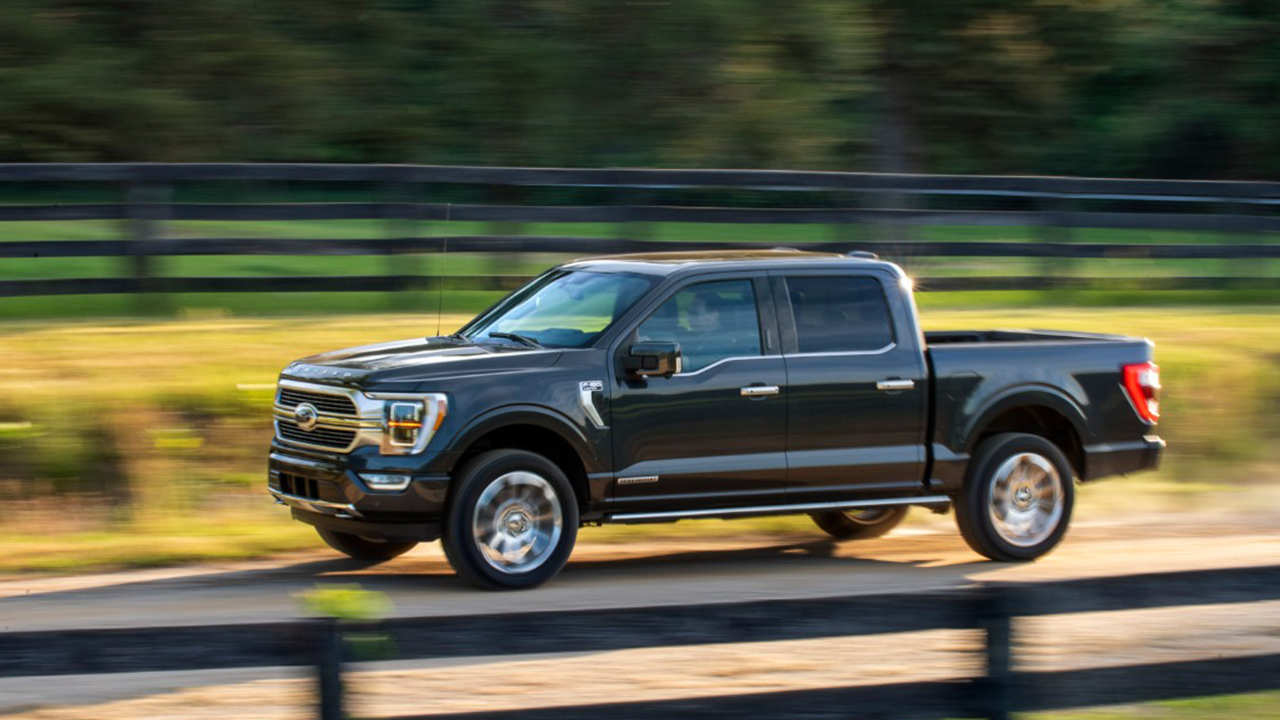
5. Ford F-150 (Recent Models)
The Ford F-150 is one of the best-selling trucks in America, and for good reason: it combines durability, versatility, and proven performance.
When considering used models, especially those from the last decade, the F-150 remains a standout choice for buyers who need a truck that can handle tough workloads and daily driving with equal ease.
Ford’s engineering focus on robust frame construction, powerful yet efficient engines, and user-friendly technology makes the F-150 a remarkably dependable used truck option.
One of the F-150’s key strengths lies in its engine options. The 3.5-liter EcoBoost V6 has earned praise for offering strong power output with good fuel economy, while the 5.0-liter naturally aspirated V8 delivers classic truck performance with known reliability.
Both engines benefit from decades of continuous refinement, resulting in powertrains that can reliably exceed 200,000 miles if maintained properly. Additionally, Ford’s extensive dealer network and the popularity of the F-150 mean that parts availability is excellent, and repairs tend to be more affordable compared to less common trucks.
The F-150’s versatility is further enhanced by its broad range of configurations, including multiple cab sizes, bed lengths, and trim levels, which means buyers can find a used truck tailored to their specific needs. Whether used for work, towing, or recreational purposes, the F-150 offers a comfortable ride and a practical interior with modern features in recent models.
Despite being a full-size pickup, it manages to balance capability with everyday usability, making it a safe and worry-free used vehicle choice for truck buyers. When combined with its strong resale value and robust build quality, the Ford F-150 remains one of the most sensible used truck purchases on the market today.
5 Cars That Should Come With a Warning When Buying Used
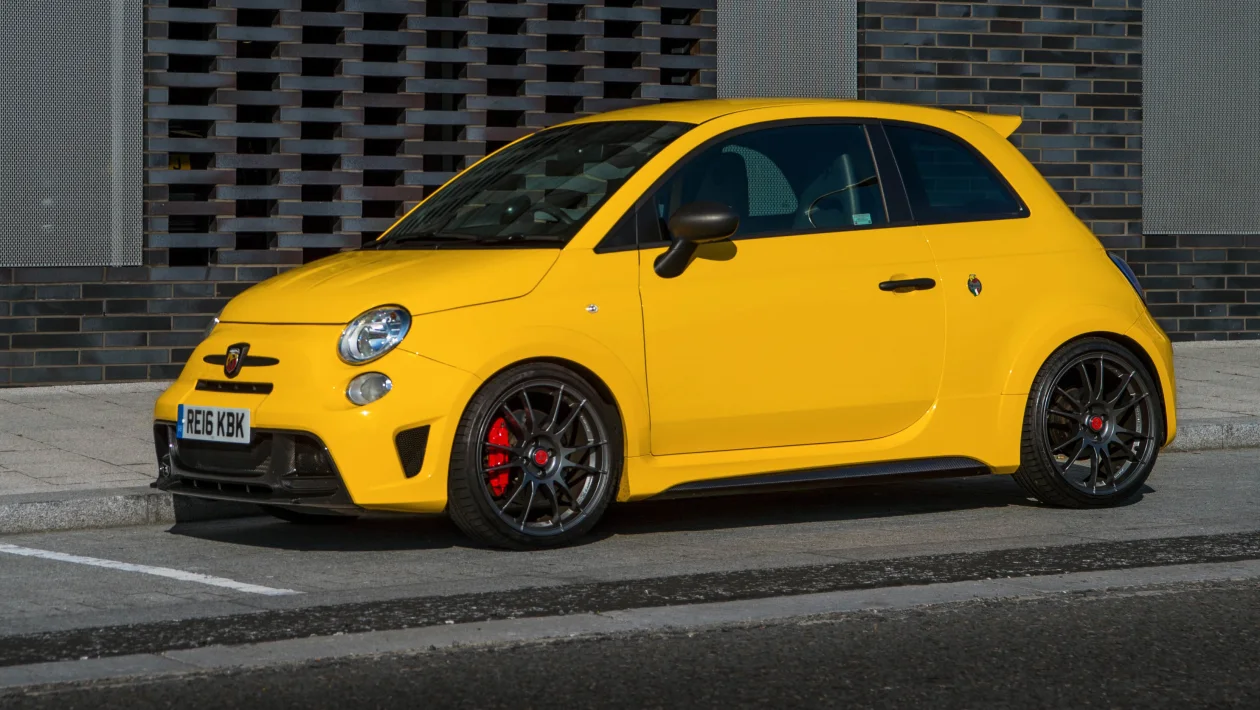
1. Fiat 500
The Fiat 500, though stylish and compact with undeniable European flair, is a prime example of how looks can be deceiving in the used car market. Designed for city life, the 500 gained attention for its retro design and nimble footprint. However, under the surface lies a car with a worrying track record for mechanical and electrical reliability.
One of the most frequently reported issues stems from the transmission, especially the “Dualogic” automatic manual in earlier models, which is known for jerky operation, premature wear, and high repair costs. Clutch problems, software glitches, and hard-to-diagnose shifting issues have caused significant frustration among owners and mechanics alike.
Electrical gremlins are another common concern in the Fiat 500. Owners often report problems with power windows, door locks, instrument clusters, and infotainment systems. These may seem minor, but they often occur in clusters, and repairs can be labor-intensive due to the car’s compact and tightly packaged interior.
Adding to the concern is that Fiat’s dealer network and part availability in North America is sparse, making even simple fixes more time-consuming and expensive than they ought to be. Mechanics unfamiliar with the Fiat’s unique European components can struggle to provide reliable service, which results in repeat trips to the shop and inconsistent fixes.
Another major downside is the general lack of refinement and durability in build quality. Suspension components tend to wear out early, leading to bouncy rides and clunky handling. The interior materials, while fun and colorful, are often flimsy and degrade quickly.
For buyers looking at a used Fiat 500, the initial low purchase price can be very tempting—but that low cost often conceals an ownership experience riddled with inconveniences, mechanical headaches, and frequent out-of-pocket expenses. Unless you’re deeply committed to the Fiat aesthetic or have access to specialized repair services, the 500 is a car best approached with considerable caution.
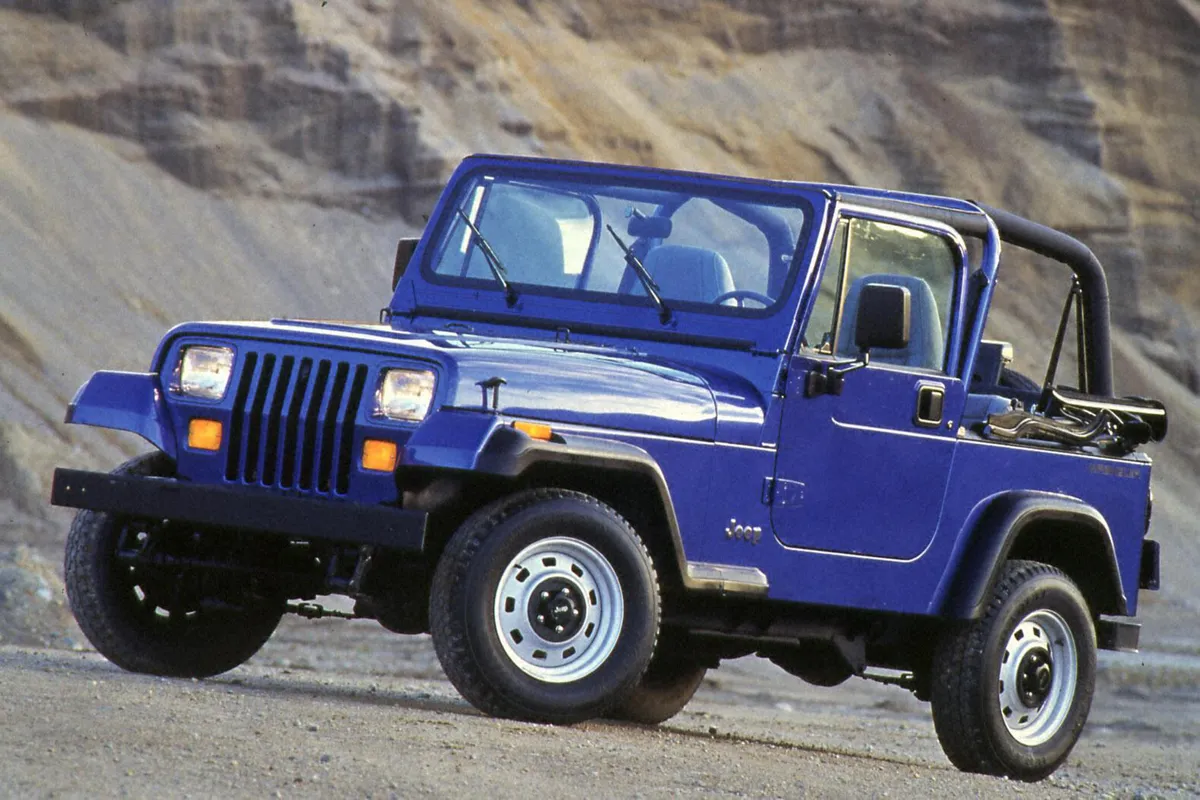
2. Jeep Wrangler (Older Models)
The Jeep Wrangler has a legendary reputation for off-road performance and ruggedness, but older models, particularly those built before 2012, can pose serious issues for the average used car buyer. While Wranglers are built to handle extreme conditions, this capability often leads to them being used and abused far more than typical daily drivers.
Buyers should be wary of excessive wear from off-roading, including suspension damage, rusted undercarriages, and frame misalignment. Lift kits and other aftermarket modifications, common among Wrangler owners, can further stress components and negatively affect ride quality and safety if not installed properly.
Mechanical reliability is another area of concern. Many older Wranglers, especially those equipped with the 4-speed automatic transmission or the 3.8-liter V6 engine (used from 2007–2011), have documented issues. The engine, while adequate off-road, is underpowered and known to consume oil at an alarming rate.
Cooling system failures, cylinder head cracks, and premature transmission wear are common problems. Parts for older Jeeps are relatively available, but labor can be expensive due to the vehicle’s complex assembly and tightly packed engine bay. The open cabin design also means electrical connectors are more exposed to the elements, leading to corrosion and connectivity problems over time.
Another overlooked factor is ride comfort and everyday usability. Wranglers from past generations sacrificed on-road handling and noise insulation in favor of their off-road capabilities. This makes long drives tiresome, especially on highways, where wind noise and body sway are hard to ignore.
Fuel economy is another drawback, with older Wranglers barely breaking into the low 20s in MPG even in optimal conditions. While enthusiasts may love the Jeep’s character, versatility, and modifiability, the average buyer looking for a reliable, easy-to-maintain used vehicle should think twice before pulling the trigger on an older Wrangler without a detailed inspection and service history.
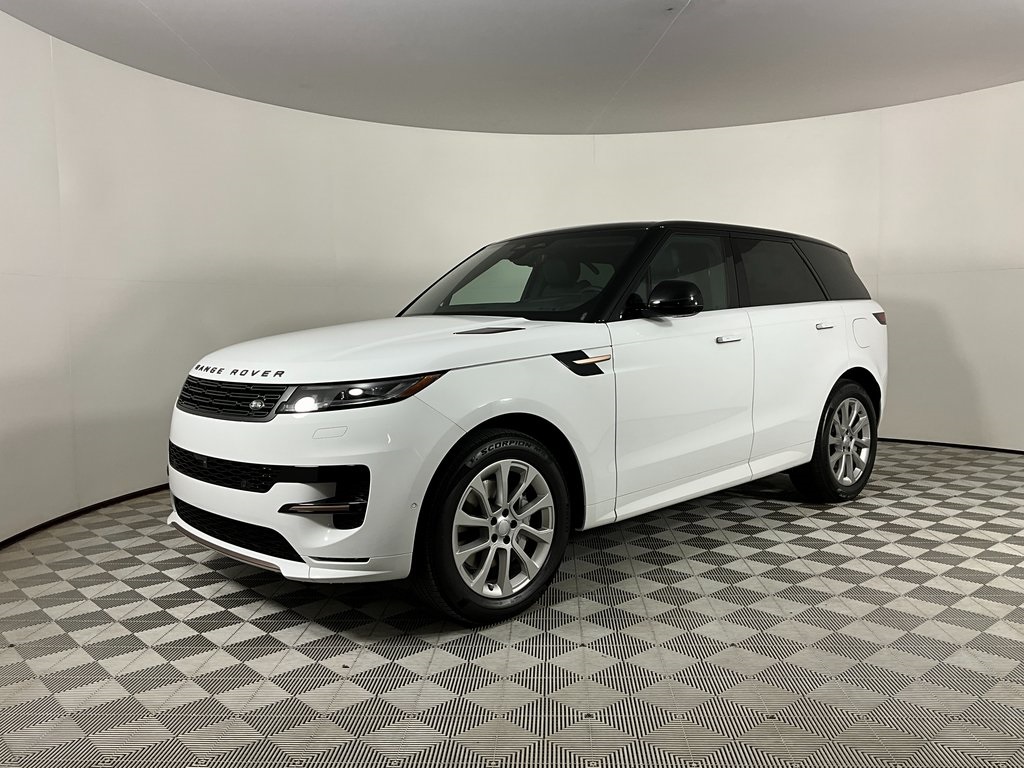
3. Land Rover Range Rover (Older Models)
Few vehicles command the road like a Range Rover, but beneath the luxury veneer lies a mechanical and electrical complexity that makes older models a dangerous proposition on the used market. While the allure of owning a high-end SUV for a fraction of its original price can be strong, the Range Rover’s depreciation curve exists for a reason.
Models built before 2015—especially those from the early-to-mid 2000s—are notorious for a laundry list of reliability issues. Among the most serious are failures in the air suspension system, which is expensive and labor-intensive to repair. These systems can leak, sag, or fail, turning your plush ride into a bumpy mess and draining your wallet in the process.
Electrical problems are rampant, particularly in the infotainment systems, central locking, climate controls, and warning sensors. The complexity of the wiring and control modules often requires dealership-level diagnostic tools, making even minor issues a major headache. Water ingress from sunroof drains or door seals has been known to damage critical components like the fuse box and ECUs (Electronic Control Units), leading to thousands of dollars in repairs.
Many owners report cascading electrical failures where fixing one problem reveals or triggers another. With the cost of parts and labor being significantly higher than average, older Range Rovers frequently end up abandoned or sold at steep discounts, often for good reason.
Moreover, engine and drivetrain problems aren’t uncommon. The Jaguar-sourced V8 engines can suffer from timing chain tensioner failures and cooling system breakdowns, and the ZF automatic transmissions, while generally smooth when new, can develop rough shifting or leaks in aging models.
Range Rovers are also heavy, which puts additional stress on brakes, tires, and suspension components, meaning frequent replacements and higher wear-and-tear costs. Unless a buyer is prepared to treat their used Range Rover like a part-time project and can afford premium repair bills, the experience is likely to be one of frustration rather than luxury. These are vehicles better suited for those with both a passion for British SUVs and a generous repair budget.
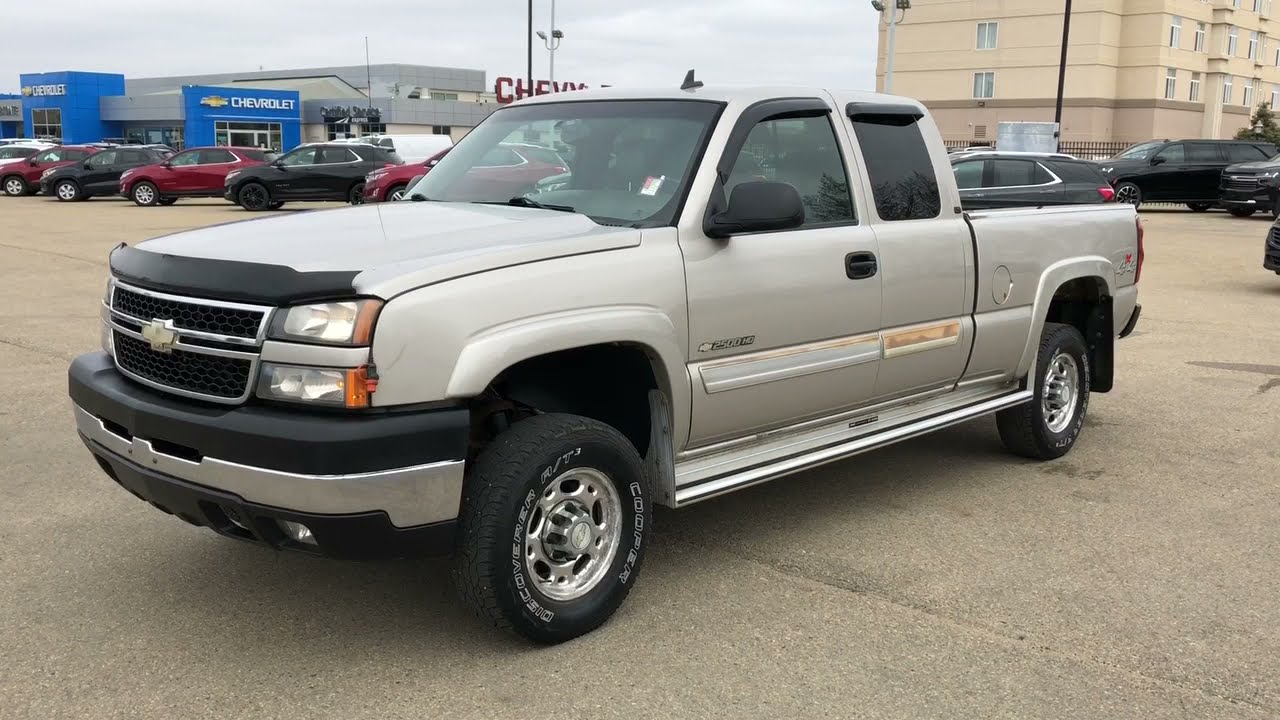
4. Chevrolet Silverado (Early 2000s Models)
While the Chevrolet Silverado is often considered a dependable workhorse, early 2000s models—particularly from 1999 to 2006—carry a host of issues that can turn a used truck purchase into an expensive misstep. One of the biggest concerns is rust, which affects the frame, brake lines, and body panels of trucks driven in regions with snowy winters and road salt exposure.
Rust-related failures are not just cosmetic; they can compromise structural integrity and lead to brake line ruptures and undercarriage deterioration that are both expensive and dangerous to fix. Even trucks that appear clean on the surface may hide serious rust underneath, requiring a thorough inspection before purchase.
Mechanical issues are also prevalent in these older Silverados. The 4L60E automatic transmission, common in half-ton models, is known for premature failure, especially when subjected to towing or heavy hauling. Symptoms like hard shifting, slipping gears, or total failure may not appear during a test drive but can quickly emerge under regular use.
Fuel pump failures and intake manifold gasket leaks are also common, along with dashboard electronics that stop working intermittently. These recurring problems can add up quickly in repair bills, making an initially affordable truck a costly ongoing project.
Despite their widespread availability and strong resale following in certain regions, these older Silverados require an educated buyer. Maintenance history is critical; well-maintained examples with documented service records are far less risky. However, due to their utilitarian use, many of these trucks have been pushed hard with minimal care.
Replacing the transmission, fixing extensive rust, or chasing down electrical gremlins can rapidly erode the value proposition. Unless you’re buying from a trusted source or you’re mechanically inclined and prepared to put in the time and money, an early-2000s Silverado is a vehicle that should come with a bold caution label for the average used car buyer.

5. Mini Cooper (Older Models)
The Mini Cooper is a fun, cheeky little car that delivers go-kart handling and European style, but older models—especially those from the early 2000s to around 2012—are plagued by reliability concerns that can make ownership a nightmare. The issues start with the powertrain: turbocharged versions (especially the Cooper S models) are known for timing chain failures, which can result in catastrophic engine damage if left unaddressed.
These engines also tend to burn oil and overheat, leading to warped cylinder heads and blown head gaskets. The cost of these repairs can rival or exceed the value of the car itself, especially if multiple issues arise at once.
The Mini’s compact size, while great for parking and urban driving, makes engine bay access difficult and time-consuming. This often translates to higher labor costs for even routine maintenance, such as replacing the thermostat housing or fixing oil leaks. Electrical components are another weak point.
The central locking, infotainment, and window regulators are notorious for malfunctioning. Dashboard warning lights are known to light up erratically, and diagnosis often requires dealership-grade diagnostic tools. All these quirks may be tolerable in a new car under warranty, but in a used Mini Cooper, they quickly become expensive headaches.
Finally, the Mini’s sporty suspension tuning and low-profile tires contribute to a rough ride, and the suspension components themselves wear out more quickly than in comparable compact cars. Control arms, bushings, and shocks tend to fail early, especially in models that have been driven hard.
For buyers who fall for the Mini’s charm and want a unique driving experience, the used market offers tempting prices, but those prices often reflect the high likelihood of mechanical issues. Unless you find a meticulously maintained Mini with a full service history and preemptive repairs, it’s a vehicle that demands caution and a healthy repair fund. Cute, yes. But cute doesn’t keep you off the side of the road.
Also Read: 5 Cars That Maintain Value Despite High Mileage And 5 That Drop Like Rocks
Navigating the used car market can feel overwhelming, but the key takeaway is that knowledge is your best defense—and your best tool. The ten vehicles discussed in this guide represent two ends of a spectrum: one offering peace of mind and lasting value, the other often leading to frustration, expensive repairs, and buyer’s remorse.
In the world of used cars, reputation matters. It’s built on the lived experiences of thousands of owners, long-term durability data, and the collective wisdom of mechanics and automotive experts who’ve seen the same patterns again and again.
On the “safe to buy” side, vehicles like the Toyota Corolla, Honda Civic, Mazda3, Subaru Outback, and Ford F-150 offer time-tested reliability across a range of driving needs. Whether you’re a student, a commuter, a weekend warrior, or someone who needs a tough truck for daily hauling, these models check the boxes that matter: low maintenance costs, strong resale value, widely available parts, and a track record of staying on the road far longer than average.
These aren’t the flashiest vehicles on the market, but they don’t need to be. They excel by being dependable, affordable, and built to last.
In contrast, the vehicles we’ve highlighted as “should come with a warning” aren’t necessarily bad cars in the traditional sense. Many were innovative when new, well-loved for their design, driving dynamics, or premium feel. But their long-term ownership experience tells a different story. Cars like the Fiat 500, Jeep Wrangler (older models), Land Rover Range Rover, Chevrolet Silverado (early 2000s), and Mini Cooper (pre-2013) come with strings attached.
Whether it’s mechanical complexity, subpar engineering decisions, high repair costs, or widespread reliability issues, these vehicles often turn into money pits for the average used car buyer. What might seem like a steal upfront can quickly turn into a financial burden if you’re not cautious.
This isn’t to say that every example of these vehicles is a ticking time bomb. A meticulously maintained Mini Cooper with full service records and low mileage might serve its next owner well. A Jeep Wrangler that’s never seen an off-road trail and was pampered by its previous owner could be a fantastic purchase.
But the odds are stacked against the average buyer when these models are involved, especially when you factor in the tendency of previous owners to skip maintenance or attempt DIY repairs. That’s why diligence is so crucial. Pre-purchase inspections, VIN checks, service histories, and expert opinions are essential steps before committing to any used car, especially those with known reliability concerns.
Ultimately, the goal of buying used is to maximize value. That means finding a car that not only fits your budget but also minimizes the risk of major expenses down the road. The cars that made our “zero fear” list earn their place by doing exactly that. They don’t require constant babysitting. They don’t surprise you with expensive repairs. They just work—and keep working—as long as you meet them halfway with routine maintenance.
So, whether you’re walking into a dealership lot, scrolling through online classifieds, or negotiating a private sale, remember this: the best used car isn’t necessarily the one with the lowest price or the most features. It’s the one that offers the greatest long-term peace of mind. With this guide in hand, you now have a roadmap to help avoid the pitfalls and focus on cars that are likely to go the distance.
Because at the end of the day, a car should serve your needs, not become your next big problem. Choose wisely, and drive on with confidence.

